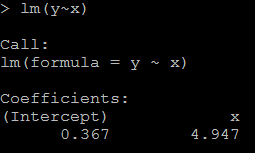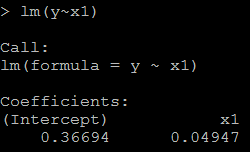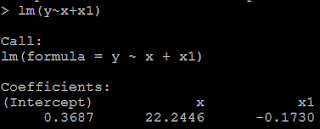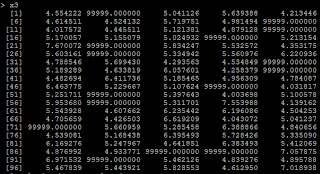Sometimes, we will get irregular coefficient: consider sell_amount vs sell_price, we should expect a negative coefficient because as the price increases, the selling amount should become less from common sense. But sometimes it may give a positive coefficient.
The possible reason is we put high correlated variables in the predictors: suppose we have both sell_price and product_price in the model, and we know product_price is highly correlated to sell_price. An example is shown below in example 1.
Another possible reason is we recode the missing data: if missing data is at the left, but we recode it to the right(like if x<0 we recode x=99999 which is a very big number).
Example 1:
# set up random number seed set.seed(1000)
# generate 100 x with x ~ N(5,1) x=rnorm(100,5,1)

# Y=5*X y=5*x+rnorm(100,0,1)
# X1=100*X x1=x*100+rnorm(100,0,.2)

1)it is reasonable that the regression coefficient is 4.947(while the true value is 5). #relation between x and y lm(y~x)

2) because x1=100*x, the coefficient for x1 should be 1/100 of above, as below: # relation between x1 and y lm(y~x1)

3) but if we put both x and x1 in the model, then we could not get the positive coefficient for both x and x1. This is because of multicollinearity. # put both x and x1 as the predictor lm(y~x+x1)

Example 2:
4) another condition is from we recode missing data. Suppose if x<=4 is missing, and we recode missing as 99999. # if x<=4, treat it as 99999 x3=ifelse(x>4,x,99999)

5) Then the regression coefficient is negative because of the 99999. # relation between x3 and y lm(y~x3)
The recode issue can be treated as a special case of non-linear relation.


nice blog
ReplyDeletebest devops training in chennai
data Science training in chennai
devops training in chennai
best hadoop training in chennai
best hadoop training in omr
hadoop training in sholinganallur
best java training in chennai